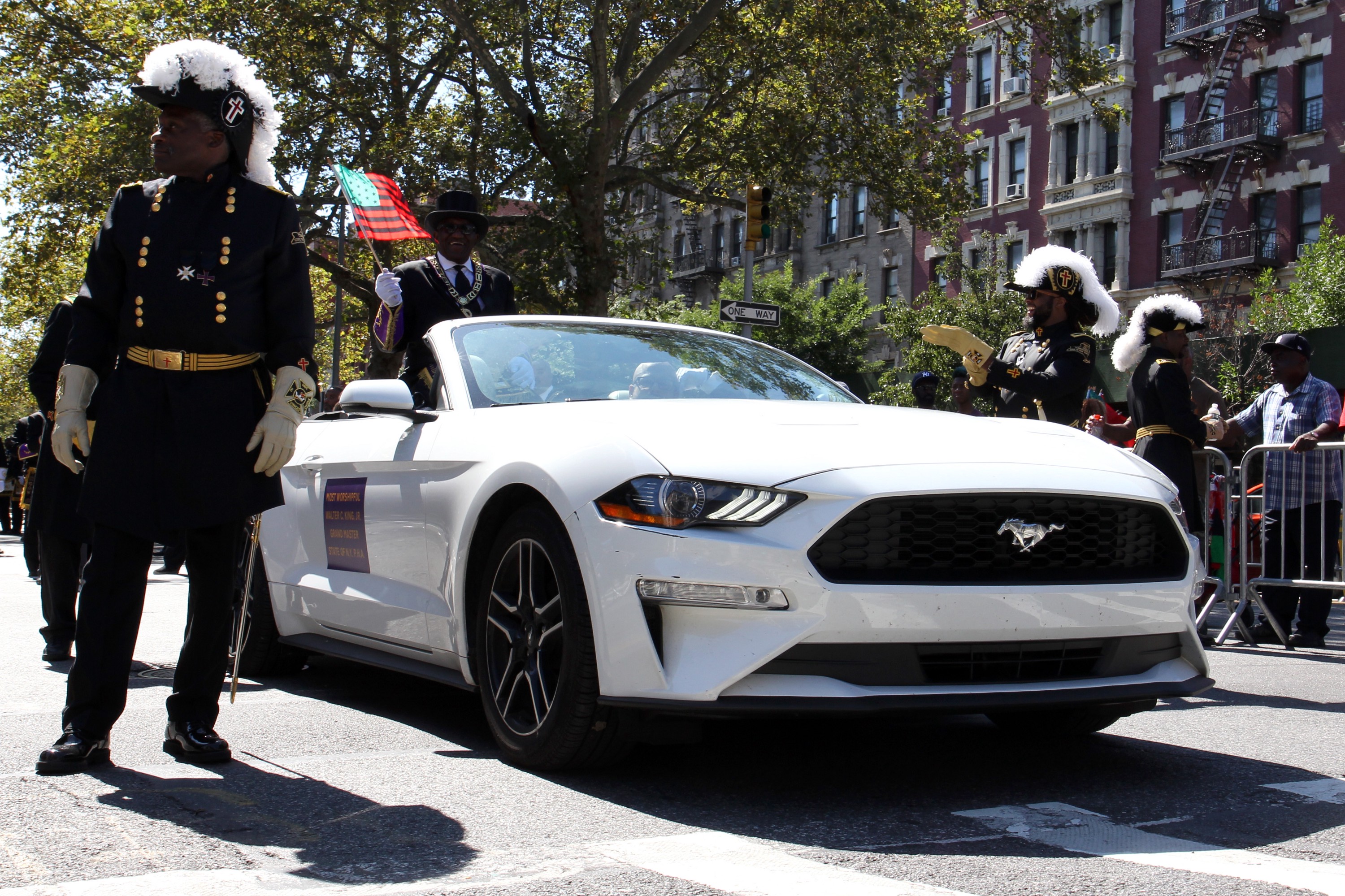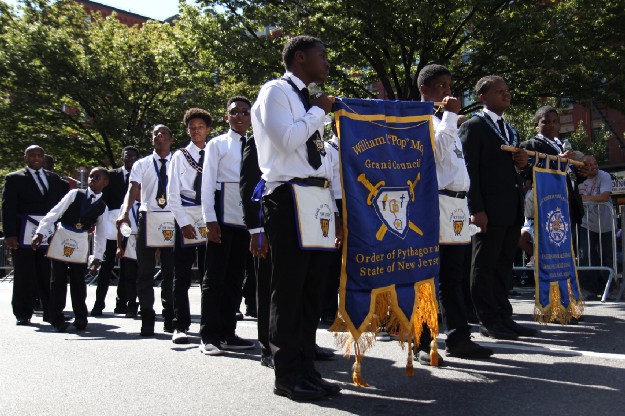Authors:
Historic Era: Era 10: Contemporary United States (1968 to the present)
Historic Theme:
Subject:
October 2020 | Volume 65, Issue 6


Authors:
Historic Era: Era 10: Contemporary United States (1968 to the present)
Historic Theme:
Subject:
October 2020 | Volume 65, Issue 6

The late-summer sun beamed down on the parade route in New York City, forcing most people to shed layers of clothing in order to stay cool and comfortable as they marched down the street. But being an honorable member of an ancient fraternal organization meant discipline and dedication, a fact embodied by the ornate, if weather-inappropriate, ceremonial regalia worn by one group of participants that sweltering afternoon.
Clad in suits with brass buttons, white gloves, Masonic aprons, and feathered hats, these marchers strolled along undeterred by the heat, proudly waving at onlookers as the procession flowed down Adam Clayton Powell Jr. Boulevard. They were freemasons, marching in the 50th annual African American Day Parade last year in Harlem.
“That’s right! Teach those boys how to be men!” exclaimed an onlooker as a group of well-heeled teenagers passed by, sandwiched between groups of their senior counterparts. The boys were members of the Knights of Pythagoras, a division of Freemasonry open to young African American men. And the marchers bookending the Knights were Prince Hall Freemasons and their female cohorts, the Sisters of the Eastern Star.
Mention Freemasonry, a fraternal organization that traces its roots to medieval stonemason guilds in Europe, and most people imagine a secretive culture with mysterious motives — something antiquated, out of touch, and insular. Since its members united to establish the first Grand Lodge in 1717, a panoply of accusations and conspiracy theories have been lobbed at the group. Claims range from the mundane (Freemasonic elected officials engaging in political manipulation), to the scandalous (Jack the Ripper was a Freemason), to the outrageous (Freemason astronauts faked the moon landing).
But there is another story of Freemasonry, one that has been overshadowed by the sensationalism surrounding the predominantly white, mainstream version. It is the story of Prince Hall Freemasonry, the parallel and internationally recognized African American branch of Masonry. It is the oldest African American fraternal organization in the United States, predating the Constitution and the election of the first president.

“It’s not just an organization,” said Kevin Wardally, treasurer of the Prince Hall Grand Lodge on 155th Street in Harlem. “It’s a sacred trust that was given to me by my grandfather, and my grandmother, to pass on to my son.”
Since its inception at the dawn of the Revolutionary War, Prince Hall Freemasonry has carried on a